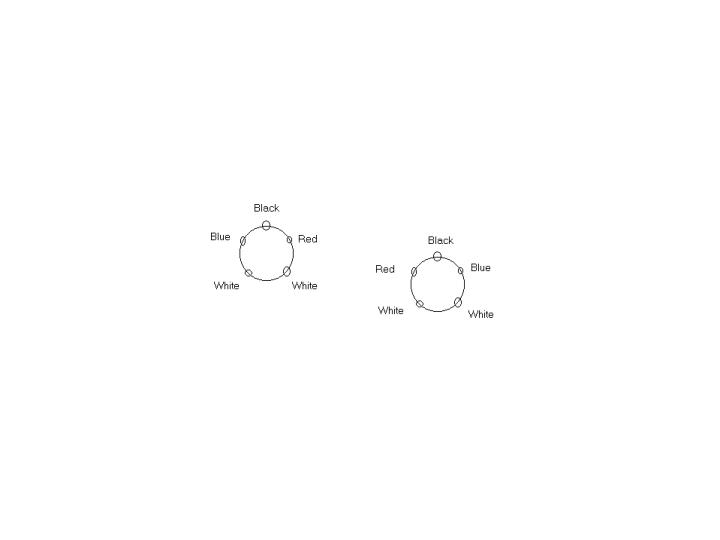jeremy02 wrote:
I'm not sure why you need to divide by two because there are two white pearls, how does this change the fact that there is a total of 5 pearls, does it mater if 1,2 or three are white, all that matters is the there is 1 out of 5 that is black and 1 out of 5 that is blue, right?
Below you will see a diagram which will explain what I mean. In a ring like formation, there are (n-1)! ways of arranging the components by fixing 1 item down. In the drawing, let's say that the black pearl is anchored, there are 4! ways of arranging the remaining items. However, because there are 2 white pearls, you can "interchange them" and you will have to further reduce by 2! the possible number of outcomes. Now, we are down to 4!/2! = 12.
The next concept is a bit more subtle. Normally, when we are fixing people around a round table, (n-1)! would suffice to give you the answer. However, we are talking about beads on a necklace. Once you have one formation, you can "flip" it over and you will get the "mirror" image. Look carefully at the diagram and you will see that although the two necklaces are arranged differently, the right-hand side one is just the "mirror" image of the left-hand side one. Hence, you have to divide everything by another factor of 2 because of the possibility of making another outcome merely by flipping the necklace over. 12/2 = 6
Attachments

GMATClub3.jpg [ 6.68 KiB | Viewed 1382 times ]

